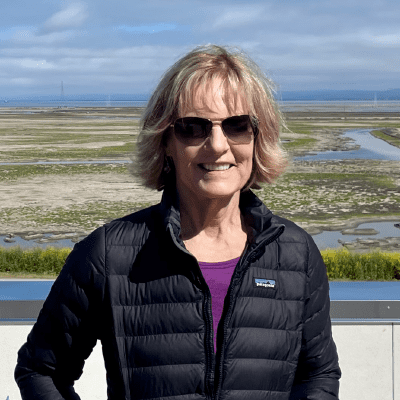Every year, Save The Bay’s Habitat Restoration Team engages thousands of volunteers to plant upwards of 20,000 native plants across the Bay Area to restore wetland transition zone habitat for wildlife. Our staff can quantify the progress made at each site through a number of metrics: the number of plants or species we planted at a restoration site, the pounds of invasive species we removed, or the gallons of water we used to irrigate the native plants we’ve installed. But how do we really know if we’ve made progress at any given restoration site? Every summer, the Habitat Restoration Team conducts vegetation monitoring to assess the changes in plant composition at each restoration site. We do this by quantifying percent cover, a measure of how much space a plant species takes up in an area, at random points across a restoration site. Percent cover acts as a proxy for how much influence a species has in an ecosystem by measuring its relative abundance.
Guess the Percent Coverage
The gifs below will cycle through three views to help you guess what percentage of space a plant is taking up. Find the answers at the end of the blog.
|
Percent coverage of yellow flowers
|
Percent coverage of pink flowers
|
|
Percent plant coverage
|
Percent grass coverage
|
How We Monitor
At each restoration site, our team divides the transition zone into different elevational strata (see right image below). We measure the percent cover of native and non-native plants in a one square meter quadrat at random points within each stratum. This gives us an insight into which species thrive best in each section of the transition zone at a particular site. We also measure the tallest height of each species found in our quadrats to measure the structure of the habitat.


What We Learn
Repeating this process year after year reveals how our restoration sites change over time, how different restoration practices can produce different results in vegetation, and how climate patterns can impact plant survival. For example, we have observed that native annual plants have extremely high germination and survival rates during years of average to high rainfall, but crash during periods of drought, such as the previous 2020-2021 rain year. Salt tolerant plants (such as Alkali Heath) and native shrubs that were 2-3 years old saw much better survival and continued growth despite recent drought conditions.



78% |
 1.1% 1.1% |
 31.1% 31.1% |
71.1% |






















































